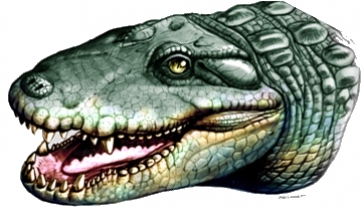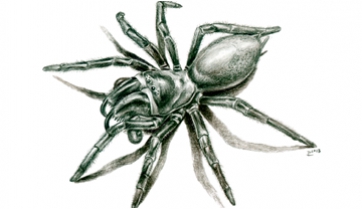ICP News
Diferents vistes de dues falanges distals d'Oreopithecus bambolii The study of the distal phalanx of the thumb of the fossil hominoid Oreopithecus bambolii has revealed that this species had the ability to grasp objects with precision between the fingers like humans do, with a much higher accuracy than the extant…
The femur of Orrorin tugenensis, a new step towards the origins of bipedalism
04 Dec 2013
1602 times
El fèmur d'Orrorin tugenensis s'ha estudiat amb tècniques de morfometria geomètrica 3D Sergio Almécija, associated researcher at the Institut Català de Paleontologia Miquel Crusafont (ICP), publishes today an article in Nature Communications analyzing the femur of Orrorin tugenensis, one of the oldest early humans that lived 6 million years ago…
The goat Myotragus balearicus proves itself again as an excellent evolutionary model
26 Jul 2013
2152 times
Reconstruction of Myotragus balearicus exhibited at ICP's museum in Sabadell. Laura Celia. ICP Myotragus balearicus, the endemic dwarf goat from the Balearic Islands, is proved again to be a suitable model to validate theories that relate life history of the species with some morphological features. In an article published today…
Microwear on the surface of teeth of Pliopithecus canmatensis and Barberapithecus huerzeleri. ICP. ICP researchers publish this week in the American Journal of Physical Anthropology a revision of the diet of pliopithecids, an extinct group of primates originated in Africa and spread through Europe during Miocene. Studying food marks on…
Liang Bua interior. Hanneke Meijer. Hanneke Meijer, associated researcher at the ICP, has published the first comprehensive study of the fossil birds that lived in the island of Flores, in Indonesia, where Homo floresiensis (also known as “hobbit” because of his short height) was found in 2003. The article published…
Reconstruction of the head of Globidentosuchus brachyrostris. Jorge A. Gonzalez 9 million years ago in South America lived up to 14 species of crocodiles, at least 7 of which shared the same geographical area, an abundance of closely related crocodiles that remains unparalleled to this day. The finding has been…
Reconstruction of Pau (Pierolapithecus catalaunicus) at the ICP Museum. Albert Uriach. ICP An international team of collaborators from the University of Missouri and the Institut Català de Paleontologia Miquel Crusafont describe the pelvis of Pau (Pierolapithecus catalaunicus) found in 2003 at Abocador de Can Mata (els Hostalets de Pierola, Catalonia,…
Reconstruction of the fossil specimen Hispanopithecus laietanus, from the remains found in Can Llobateres. Laura Celia. ICP The ICP researcher, Sergio Almécija, published an article this week in the Journal of Human Evolution confirming that the species known as Hispanopithecus laietanus, the most famous specimen of which is popularly known…
Reconstruction of a titanosaur in the Pyrenees 70 miliion years ago (Oscar Sanidisdro. ICP) Researchers at the Institut Català de Paleontologia Miquel Crusafont (ICP) and the universities of Zaragoza, UAB, Manchester and Liverpool publish today in the journal PLOS ONE a study confirming that the titanosaur sauropods that lived in…
Friularachne rigoi, a small spider contemporary with the early European dinosaurs
24 Feb 2013
1086 times
Reconstruction of Friularachne rigoi. Lukas Panzarin The researcher of the Institut Català de Paleontologia Miquel Crusafont (ICP) Fabio M. Dalla Vecchia and Paul A. Selden of the University of Kansas (KU) publish today in the online edition of the journal Acta Palaeontologica Polonica the description of a new species of…

















